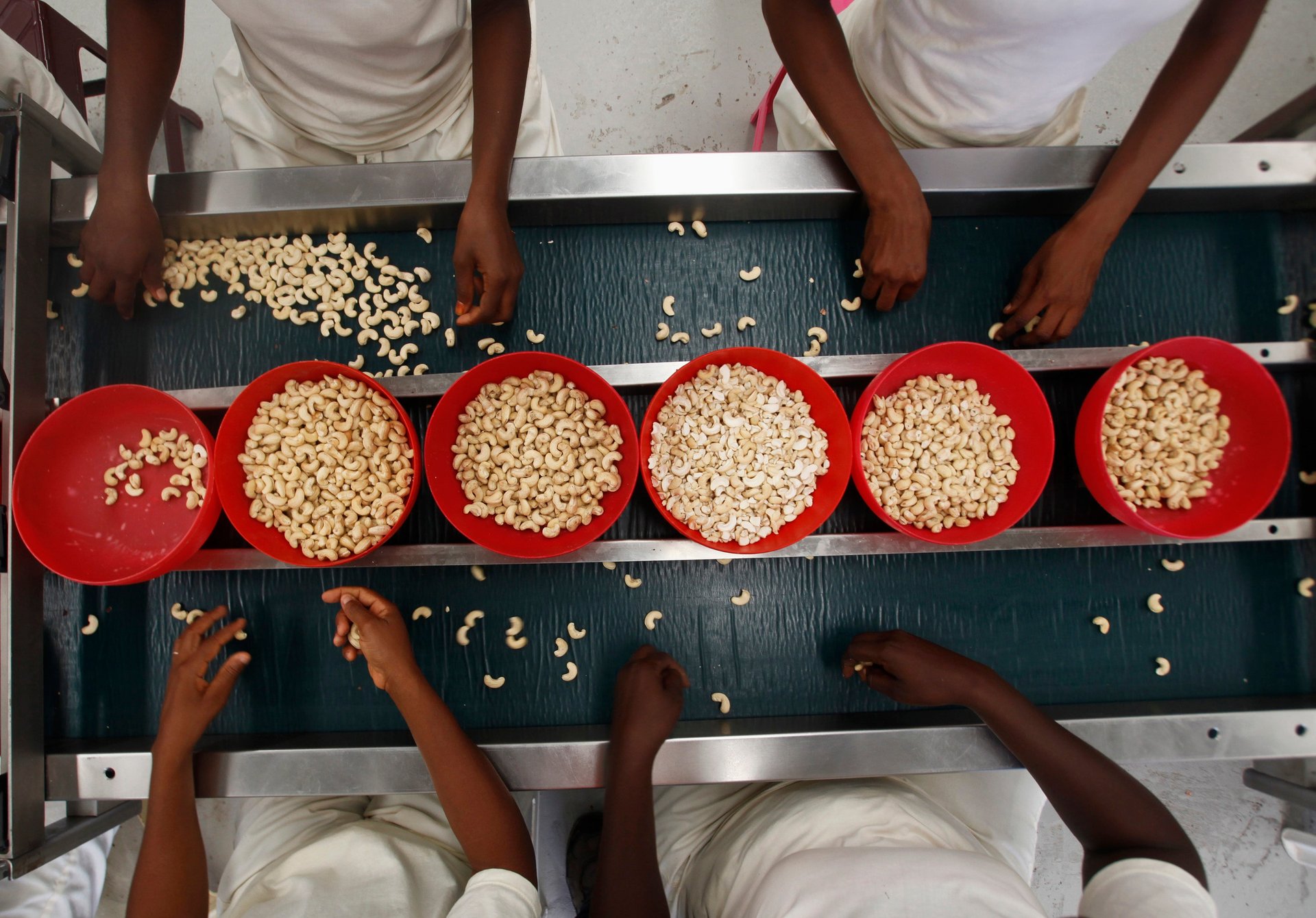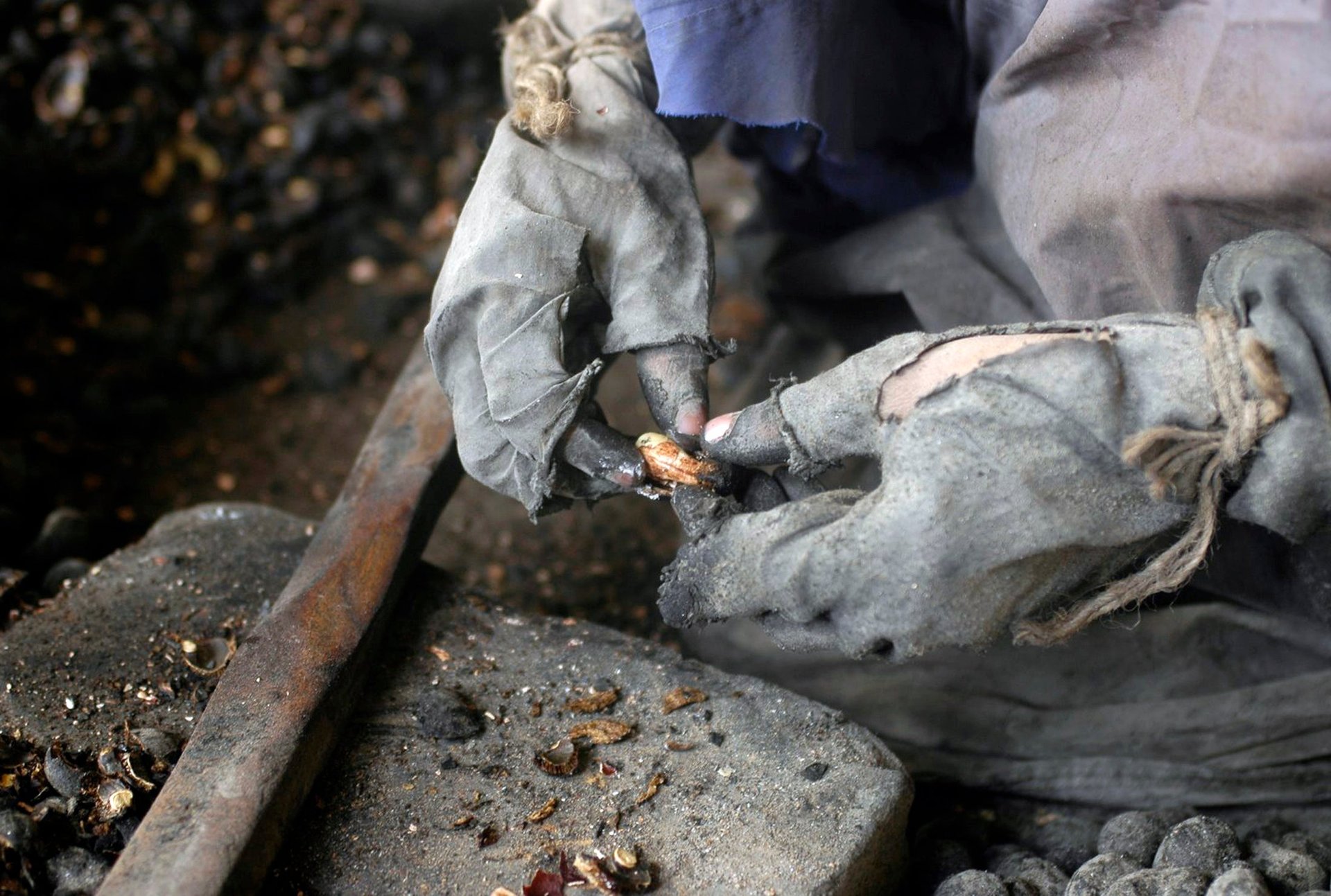Cashew milk is saving animals—but it’s hurting humans
As consumers, it seems we’re considering the environmental, nutritional, human- and animal-rights implications of our diets more than ever.


As consumers, it seems we’re considering the environmental, nutritional, human- and animal-rights implications of our diets more than ever.
If you want proof, you need only look to the many fair-trade options that line even our largest chain grocery-store shelves, or the astronomical rise in the plant-based food sector.
The global plant-based dairy market alone is projected to reach $41.8 billion by 2026. That shouldn’t come as too much of a surprise; soy and almond “mylks” sit comfortably at the café counter, American-style cheese substitutes share space in the overly-processed section of the dairy aisle, and cashew creams are at the ready to replace anything from salad dressing to sour cream to queso.
But while we seem to be increasingly calling ethics to the table when making food choices, these dairy alternatives don’t necessarily represent a wholesome choice.
Take, for example, the ethical implications of a cashew.
The cashew has a buttery taste and texture that lends itself particularly well to being processed into a large number of dairy substitutes. Being that cashews, like many nuts and legumes, can be processed into an array of dairy-like products without the use of animal products, vegans often tout them as an ethical choice that relieves them from supporting the modern dairy-cow industry and all of its atrocities.
But while they do avoid the exploitation of cows, cashew-product consumers are contributing to an industry sullied by a long, complex supply chain rife with human rights abuses.
“Blood cashews”
Traditionally, cashews are harvested and processed manually. The cashew is only rendered edible through a series of steps, and the process is as laborious as it is dangerous.
It first involves roasting or drying the nut, then removing two separate layers of shell, then steaming or roasting the exposed kernel. Between the layers of shell, the cashew’s nut oils are caustic. Exposure to the toxic oils results in painful burns to the skin (or mouth and throat, if ingested) and lung irritation if inhaled, such as from the fumes of the initial roasting process or nut dust from peeling.
Manual processing of cashews, or living in proximity to processing, has long been associated with a slew of health concerns, and those at risk for exposure often have limited access to protective gear.

Until recent decades, cashews were mainly regarded as a delicacy, and reserved for celebrations or special occasions like holidays. The vast majority of the world’s cashews were harvested, processed, and consumed in India. But growing global demand for nuts and seeds in recent decades has brought a slew of changes to the cashew industry. West Africa is now an important producer of raw cashew nuts (RCN) with Cote D’Ivoire leading the growth. In 2016 the country surpassed India as the world’s largest producer of RCN. Meanwhile Vietnam has been successfully vying for substantial market share in cashew processing for the last two decades.
A 2011 Human Rights Watch report exposed the brutal conditions of forced laborers in the rising Vietnamese cashew processing industry. So-called “patients” of the country’s drug therapy camps were being tortured, and were forced to process cashews by hand.
Those who did not work quickly enough or refused to work were subject to electroshock and solitary confinement. A Time magazine article followed the report, familiarizing the public with these so called “blood cashews” produced by way of these human rights violations.
Fortunately, backlash over the reports of forced labor in Vietnam brought calls from human rights groups and large retailers (which were mostly located in Europe and North America) for the inhumane practices to end.
The Vietnamese government claims that cashew processing no longer takes place inside their drug therapy facilities and have also enacted a number of labor laws to quell these demands for working conditions to change throughout the country, though tracking the enforcement of this legislature remains challenging for international organizations due to lack of transparency and the scope of informal operations in the industry.
This means not much attention is being called—when it comes to public consumer awareness, at least—to how the nuts are harvested, processed and delivered to consumers.
In the time since these reports were published, our hunger for cashews has only grown, bolstered in part by America’s growing interest in clean eating, which has cemented the US as one of the biggest cashew consumers. Globally, more than 829,000 metric tons of cashews are produced, reflecting 32% growth over the last decade’s average. The American market still falls well behind India in consumption (150,230 and 253,768 metric tons respectively) but Americans are the world’s second-highest consumers of cashews and the world’s leader of imported cashew kernels, importing 153,448 metric tons of kernels in 2017.
Is our obsession with this seemingly wholesome food only contributing to suffering?
Ethical mechanics
A report by the Ethical Trading Norway did conclude that progress is being made on this front. But even without the use of forced labor, cashews continue to present ethical dilemmas.
Until recent years, Vietnam’s processing capabilities could not match India’s, limited by the high cost of imported machines needed to modernize the processing. But when the government invested in building processing machines domestically, it cut costs by an estimated 40 to 50% and allowed the industry to dramatically increase processing capabilities over the last decade.
The more the process is mechanized, the rate of those suffering dermatological and respiratory issues decreases.
But only the large-scale processing operations can afford mechanization, and manual labor is still heavily relied upon for cashew processing in both India and Vietnam. And while workers are ostensibly not forced into labor or subject to the conditions of Vietnam’s drug therapy camps, the work remains grueling and workers continue to risk workers rights violations, being subject to sexual harassment, and child labor.
Cashew processors are paid by weight of kernels processed, rather than for their time, and have steep quotas to fulfill. This results in the need to work very quickly, for long hours.
Gloves slow workers down, so many opt not to wear them, exposing their skin to the caustic chemicals contained within. Others do wear protective gloves, though some are forced to buy the gloves from their employers, or are given one pair and must purchase subsequent ones after the initial set wears through.

Kinks in the supply chain
Cashew’s long supply chain make this commodity difficult to trace, and therefore additionally problematic.
Although Vietnam is the world’s largest exporter of cashew kernels, it imports nearly 90% of its RCN supply. The majority of this comes from Western Africa, namely Côte D’Ivoire, Eastern Africa, namely Tanzania, and Cambodia—three markets where production of RCN is witnessing substantial growth, but processing capabilities remain extremely limited.
The supply chain is not always secure at this stage. Fluctuations in price and unfavorable terms for farmers led to protests in Tanzania when the military stepped in last year to purchase RCN from farmers. Rodents and rot further threaten Vietnam’s supply of raw cashew imports.
On the processing side, the supply chain becomes difficult to track as cashews are traded multiple times between farming, various levels of processing, and packaging. A major retailer may purchase kernels from a large-scale processor who has purchased cashews from a number of smaller-scale operations before it, and who have purchased or harvested RCN from a variety of sources.
While we would like to believe things are getting better for the people responsible for farming, shelling, and roasting cashew kernels, we should note that substantial market growth has occurred after the discoveries of labor abuse.
There is a cultural correlation between making healthy food choices and ethical food choices, and cashew products are well-established as symbols of both of those things. Yet only 3% of the world’s cashew kernels can be designated as fair trade.
Optimists will look to RCN producing countries in Africa for hope that significant positive change will occur in the industry. Many African RCN producing countries are investing in processing facilities at home, which will markedly increase traceability of the cashew supply chain.
Nigeria, which currently exports its RCN to Vietnam for processing, is investing in six domestic processing facilities and is in talks with Walmart to eventually supply 130,000 tons of roasted cashews to the supermarket chain.
Our thirst for their products shows no sign of slowing down. The global cashew kernel market is expected to reach $13.48 billion by 2024, reflecting a 5.2% compound annual growth rate.
While human rights organizations may have quelled egregious and inhumane production practices, the lack of our ability to trace cashew kernels makes it virtually impossible to know whether child labor or other human rights violations have occurred at some point in the supply chain by the time a nut makes it into your cashew milk latte, smoothie, custard, or what have you.
At least for the time being.